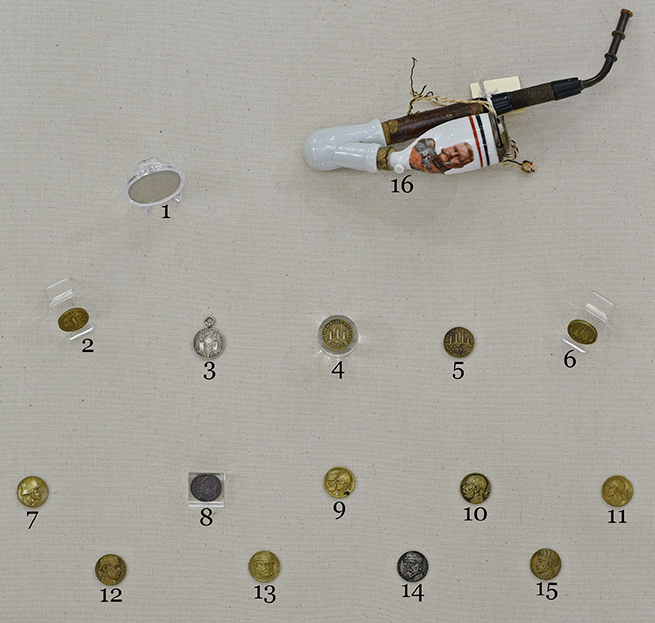The Christmas Truce
As Christmas 1914 approached, it was becoming clear to many soldiers that the war was not going to end soon. Front line troops were increasingly disillusioned with the horror and pointlessness of the fighting and were homesick — they had been promised a short war.
Bavarian medalist Karl Goetz issued a series of annual medals from 1914 to 1918 commemorating the sacrifice of soldiers and celebrating Christmas. On each medal, a German military and political leader appears on the obverse, while the reverses depict one, two, three, four or five candles, symbolizing the year of the war. The first four medals have a legend translating to “Christmas on the field,” while the 1918 medal’s legend translates to “Christmas at home.” Each medal is 22.5 mm in diameter.
 |
Click on the items in the case image below for an enhanced view
